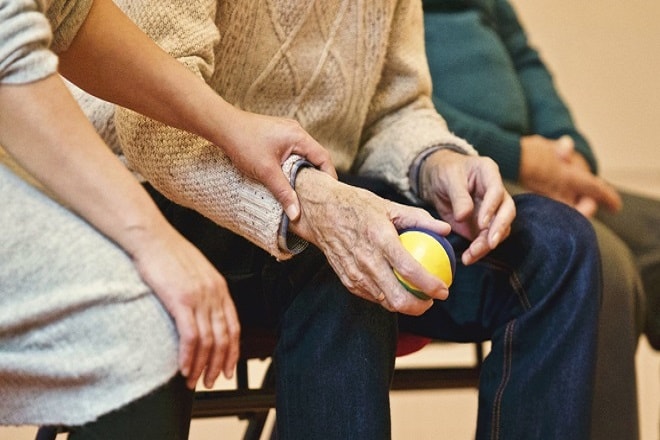Managing Joint Pain in Older Adults: Options and Safety
Joint discomfort can limit independence for many older adults, but a clear, stepwise plan can make daily life easier. This article explains common causes, practical self-care strategies, clinical options, and how to choose safe support from local services in the United States without overwhelming medical jargon.

Joint pain affects millions of older adults in the United States and often builds gradually due to wear and tear, past injuries, or inflammatory conditions. The goal is not only to reduce discomfort but also to protect mobility, confidence, and quality of life. A practical plan combines safe movement, attention to daily habits, and targeted clinical care when needed. Knowing what typically helps, what to avoid, and when to seek evaluation can make choices clearer in your area.
This article is for informational purposes only and should not be considered medical advice. Please consult a qualified healthcare professional for personalized guidance and treatment.
What does Senior Joint Pain Treatment include?
Senior Joint Pain Treatment usually starts with conservative steps. Gentle physical activity such as walking, water-based exercise, and strength work supports joint stability while limiting stress on painful areas. Physical therapy can tailor exercises, improve balance, and suggest aids like canes or walkers when appropriate. Heat may relax stiff muscles, while cold can ease short-term swelling after activity. Topical nonsteroidal anti-inflammatory gels and acetaminophen are often considered for pain control; clinicians weigh risks and benefits carefully for oral anti-inflammatories in older adults. Injections, bracing, and in select cases surgery may be considered when other options do not help.
Joint Pain Treatment options and timelines
Joint Pain Treatment is most effective when approached in stages. Early steps include activity modification, simple analgesics if appropriate, and supervised exercise. Many people notice initial change within a few weeks of consistent routine, but structural issues like osteoarthritis tend to evolve slowly. A four-to-eight-week trial of targeted exercise and daily habit changes often helps gauge progress. If pain continues to interrupt sleep, walking, or self-care, clinicians may consider imaging, injections, or referral to specialists. Recovery timelines vary with the joint involved, overall health, and adherence to home exercises. The most sustainable plans blend symptom relief with gradual strength and mobility gains.
Why Senior Joint Pain happens and how to assess it
Senior Joint Pain most commonly stems from osteoarthritis, where cartilage thins and bony changes develop. Other causes include tendinitis, bursitis, gout, rheumatoid conditions, and past injuries that alter joint mechanics. A thorough assessment typically reviews symptom patterns, recent changes in activity, footwear, fall history, and medications that may influence pain perception or bleeding risk. Red flags require urgent care, including fever with a hot swollen joint, sudden inability to bear weight, visible deformity after a fall, or new numbness and weakness. For long-standing symptoms, a primary care clinician can coordinate testing and referrals to physical therapy, rheumatology, or orthopedics.
Choosing treatment for senior joint pain safely
Selecting treatment for senior joint pain means balancing relief with safety. Discuss other health conditions, kidney and stomach risks, and all current medications and supplements with a clinician to avoid interactions. Many older adults benefit from structured physical therapy combined with home routines such as short activity bursts spread throughout the day, supportive footwear, and sleep strategies to reduce nighttime soreness. Look for local services such as community exercise classes tailored for older adults, occupational therapy for home setup and joint protection techniques, and fall-prevention programs that address balance and vision. Small environmental changes like better lighting, grab bars, and stable handrails can reduce strain and injury risk.
Senior Joint Pain Treatment and daily routines
Consistency often matters more than intensity. Brief warm-ups before activity, slow progressions in walking distance or resistance, and regular rest help avoid flare-ups. For knees and hips, exercises that target gluteal and quadriceps strength support alignment during standing and stairs. For hands, gentle range-of-motion and grip work can maintain function for household tasks. Weight management, if advised by a clinician, reduces load on weight-bearing joints. Many people find it useful to track symptoms against activity, sleep, and footwear to identify helpful patterns. Simple pacing rules such as alternating tasks and using timers make it easier to stay active without overdoing it.
Coordinating care in your area
A team approach can improve outcomes. Primary care clinicians often lead coordination and can help decide when imaging, injections, or specialist evaluations are reasonable. Physical therapists design progressive plans and can advise on braces, walkers, or canes that fit correctly. Pharmacists help review medication safety, especially for those taking blood thinners or multiple prescriptions. Community centers and senior organizations frequently host movement classes suited to different ability levels. If transportation is a barrier, ask about telehealth options or home-based programs. When pain persists despite well-followed routines, a structured reassessment clarifies next steps and prevents unnecessary delays.
Conclusion Managing joint pain in older adults works best with steady habits, realistic expectations, and careful use of clinical options. Emphasizing safety, function, and prevention of setbacks can preserve independence. By layering movement, thoughtful self-care, and coordinated professional guidance, most people can find a plan that fits daily life and adapts as needs change.




